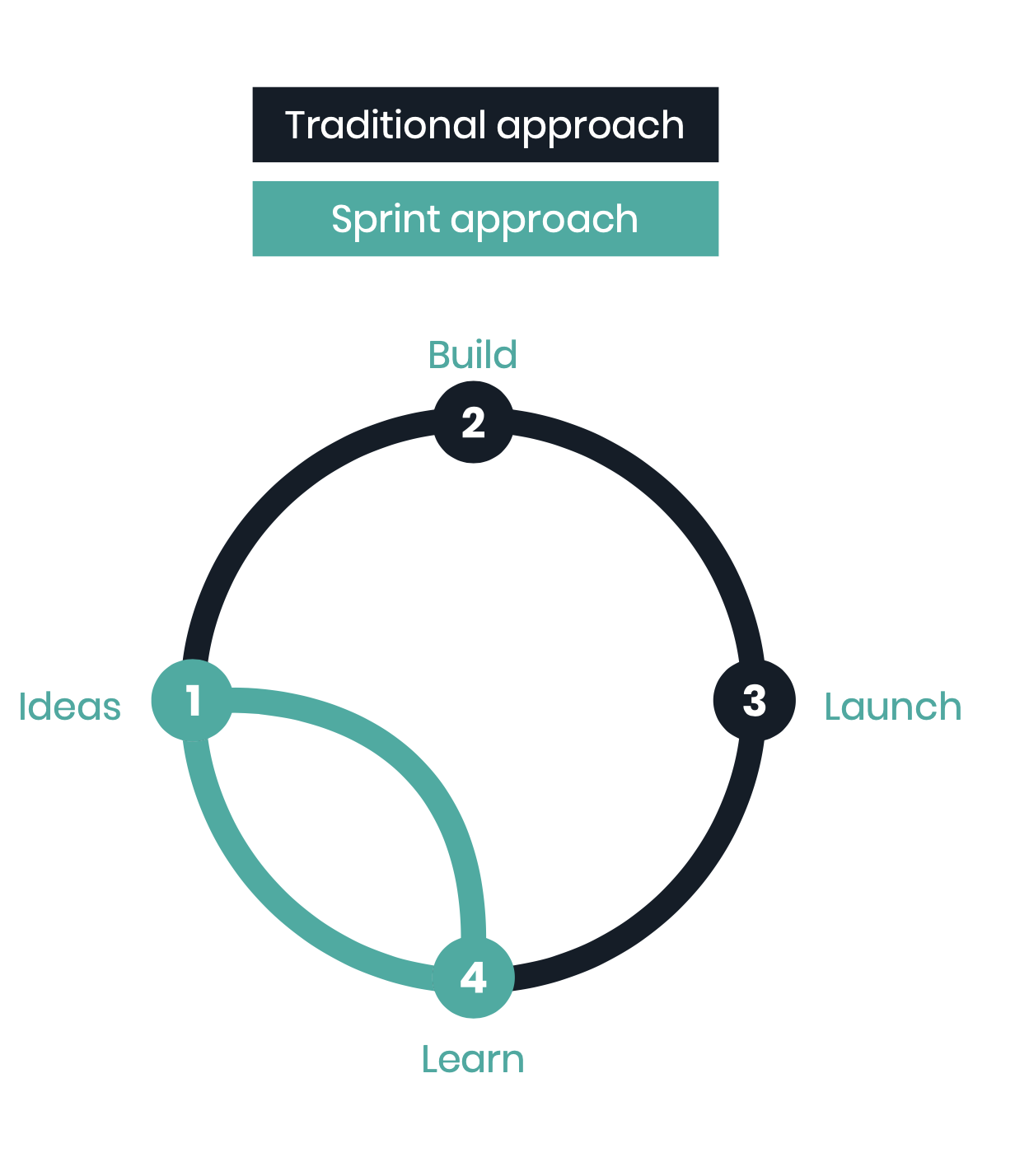- More speed
- Less risk
- Greater team alignment

More Speed
As the name suggests, a design sprint is all about speed.
It’s a way of condensing what might sometimes be weeks or months of work into a strictly-defined 4 day process.
It helps you gain clarity with your business problems, develop concepts for solving them and test and validate them – all within a week.
With a design sprint you cut out the familiar process of endless revisions, iterations, scheduling and re-scheduling of design work, all of which can so easily suck momentum from your projects, ramp up costs – and slow down your time to launching to the market. Not with a design sprint – that entire process is done and dusted within four days.
Less Risk
Another upshot of getting so far with a project in such a condensed time frame is the reduction of risk and the benefit that, if your project is going to fail, as some inevitably will, you’ll know about it much quicker – and before you’ve actually devoted time and money developing and launching it to the public.
Design Sprints are all about creating ‘prototypes’ of websites and apps that can be tested on real users before you progress any further.
If your tests don’t validate your ideas and concepts, you’re going to know about it after the first week – and not after months of costly development and the potential humiliation of a public launch of something that doesn’t hit the mark with your end users.
A Design Sprint lets you find flaws early and then pivot to an alternative approach right at the start, massively reducing the risk of developing and launching new things.
Team Alignment
Design sprints are structured to involve key people from different departments and disciplines of a company, all together, right from the start.
Have you ever been involved in a digital project which, half way through, falls flat or needs revising because the needs of another part of the business hadn’t been considered?
Design Sprints bring together all the key stakeholders, all of which are involved in the formative decisions for the project from the get-go. No more developing a marketing project only to find half-way through that it can’t integrate effectively with your finance team functions.
And no more developing a product which, close to completion, gets hacked to pieces by senior management whose opinions outrank those of the project team. You get full stakeholder buy-in right from the outset.
Better still, Design Sprints not only create unity across teams on specific projects, they also foster a culture of cross-company collaboration and team building.
Colleagues from different elements of a company who might spend little time with each other normally are brought together in a Design Sprint, focused on a common purpose – often encouraging greater levels of collaboration and understanding of each others’ viewpoints on other projects in future.